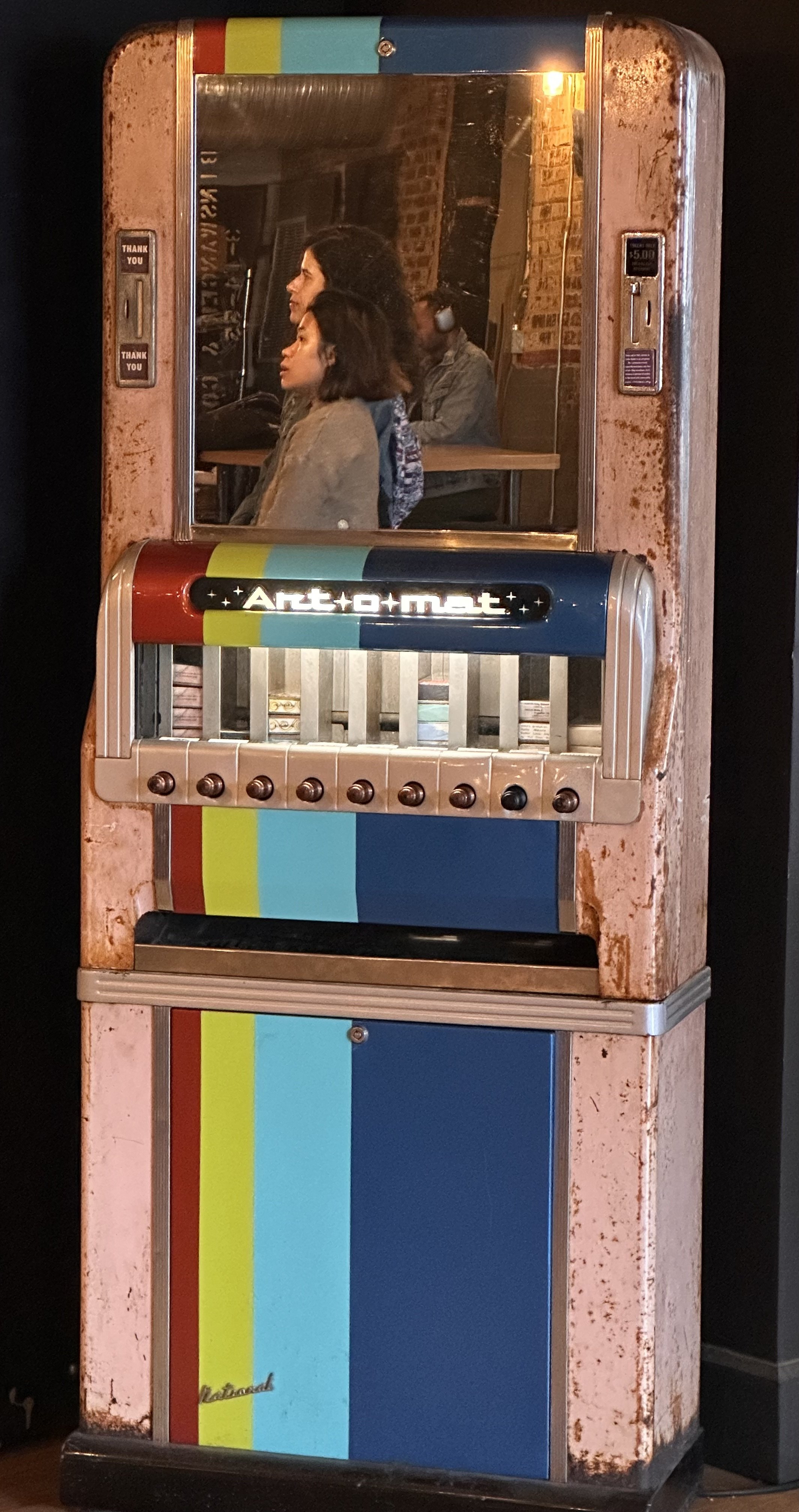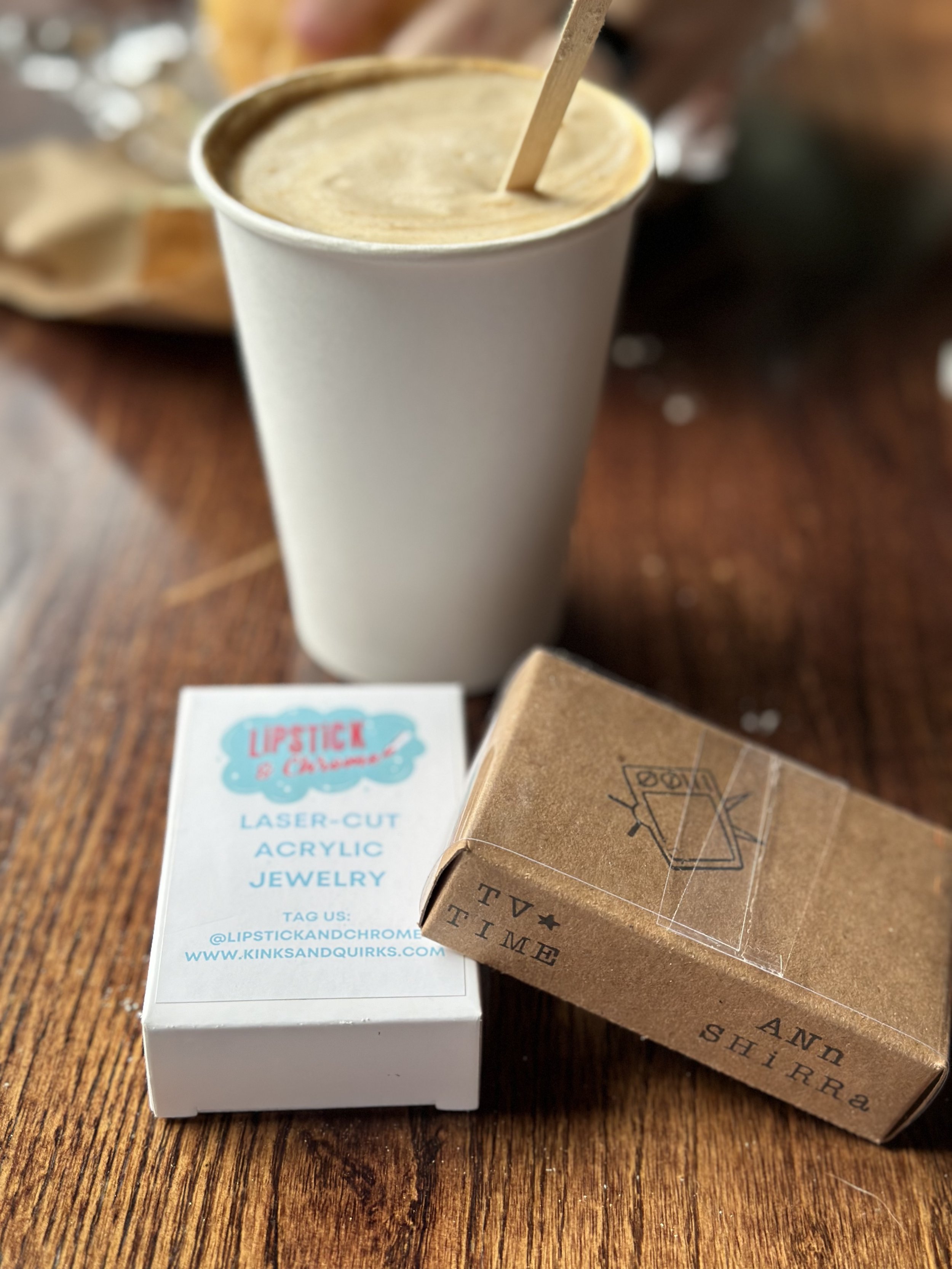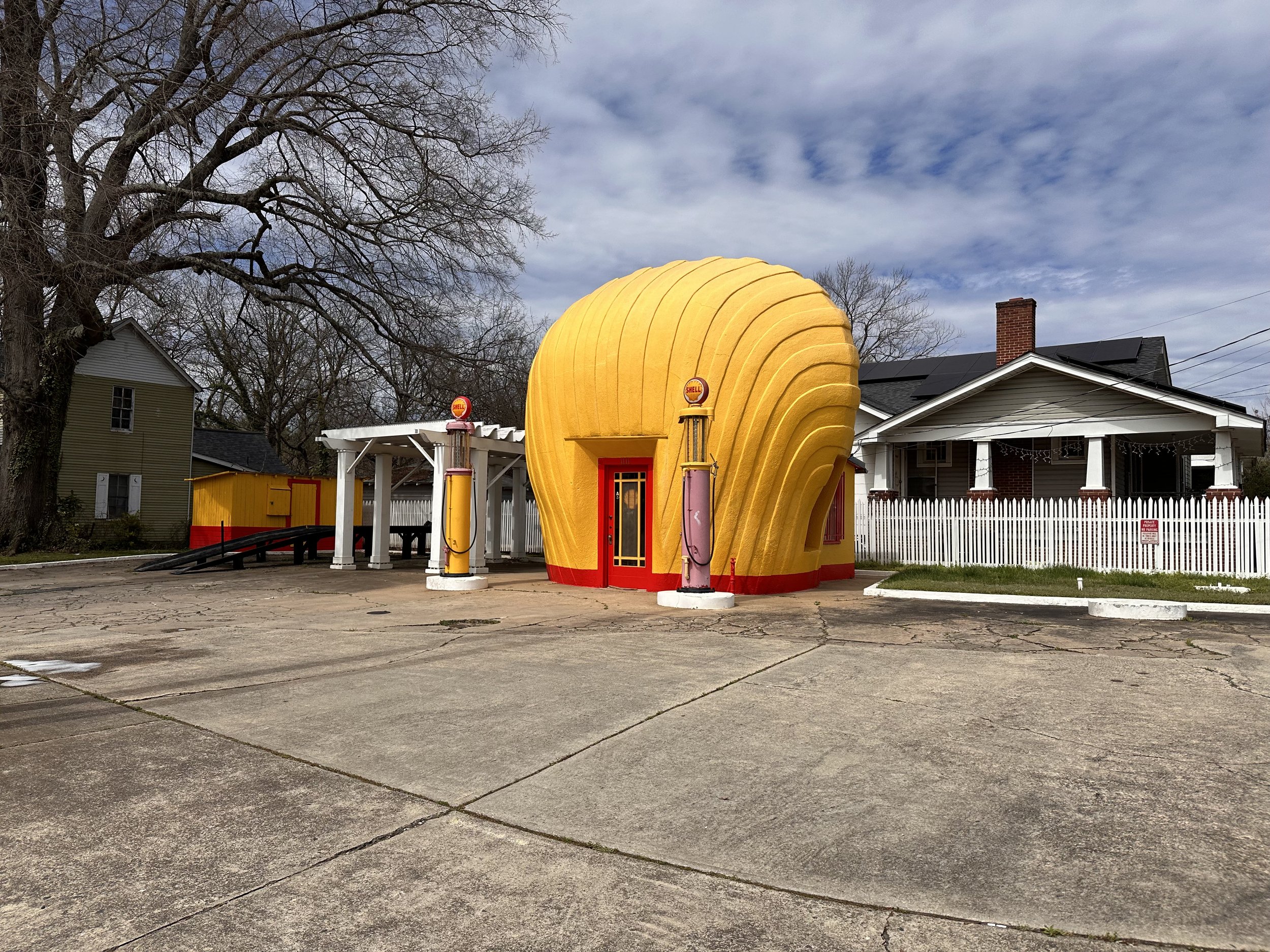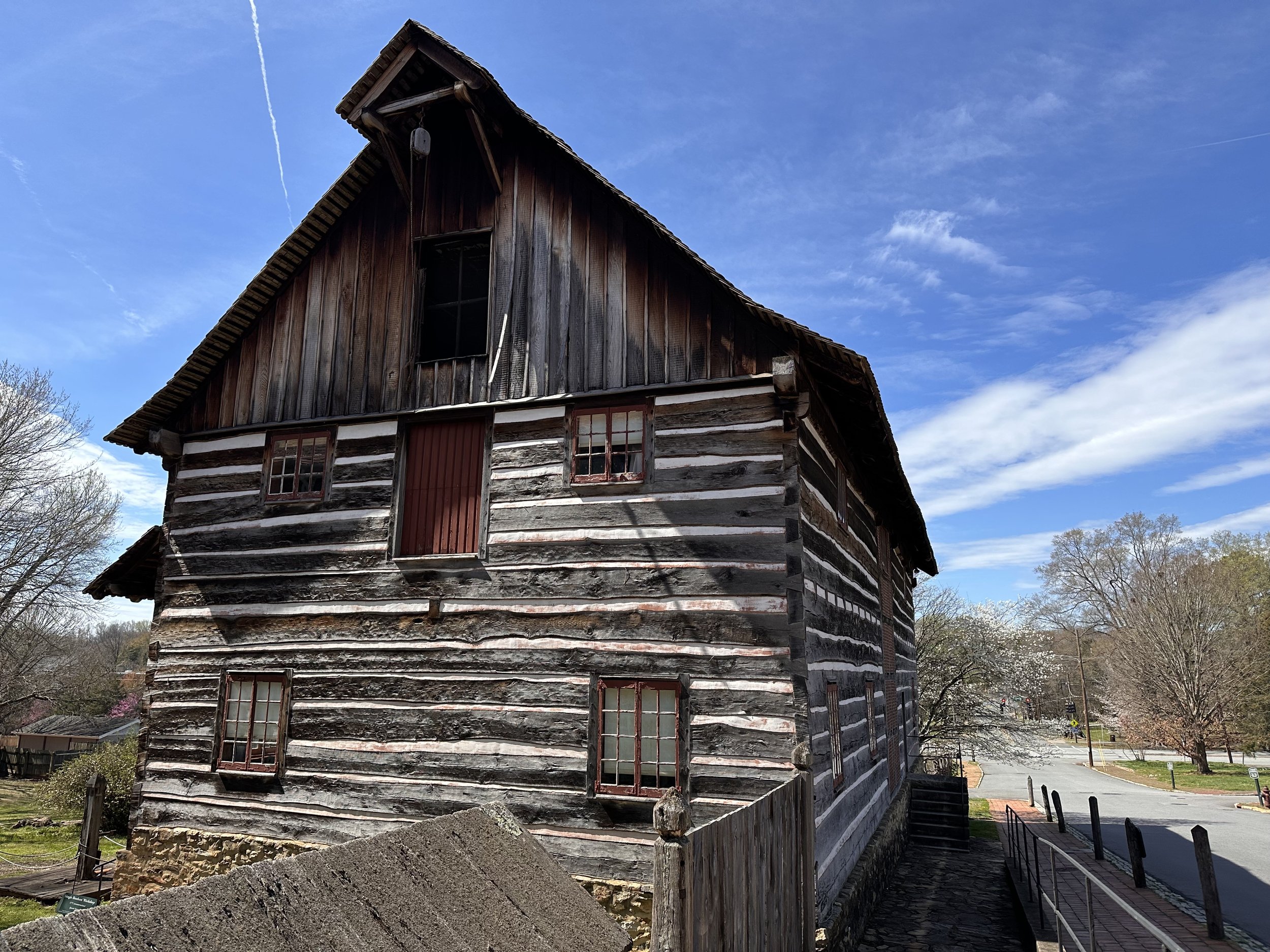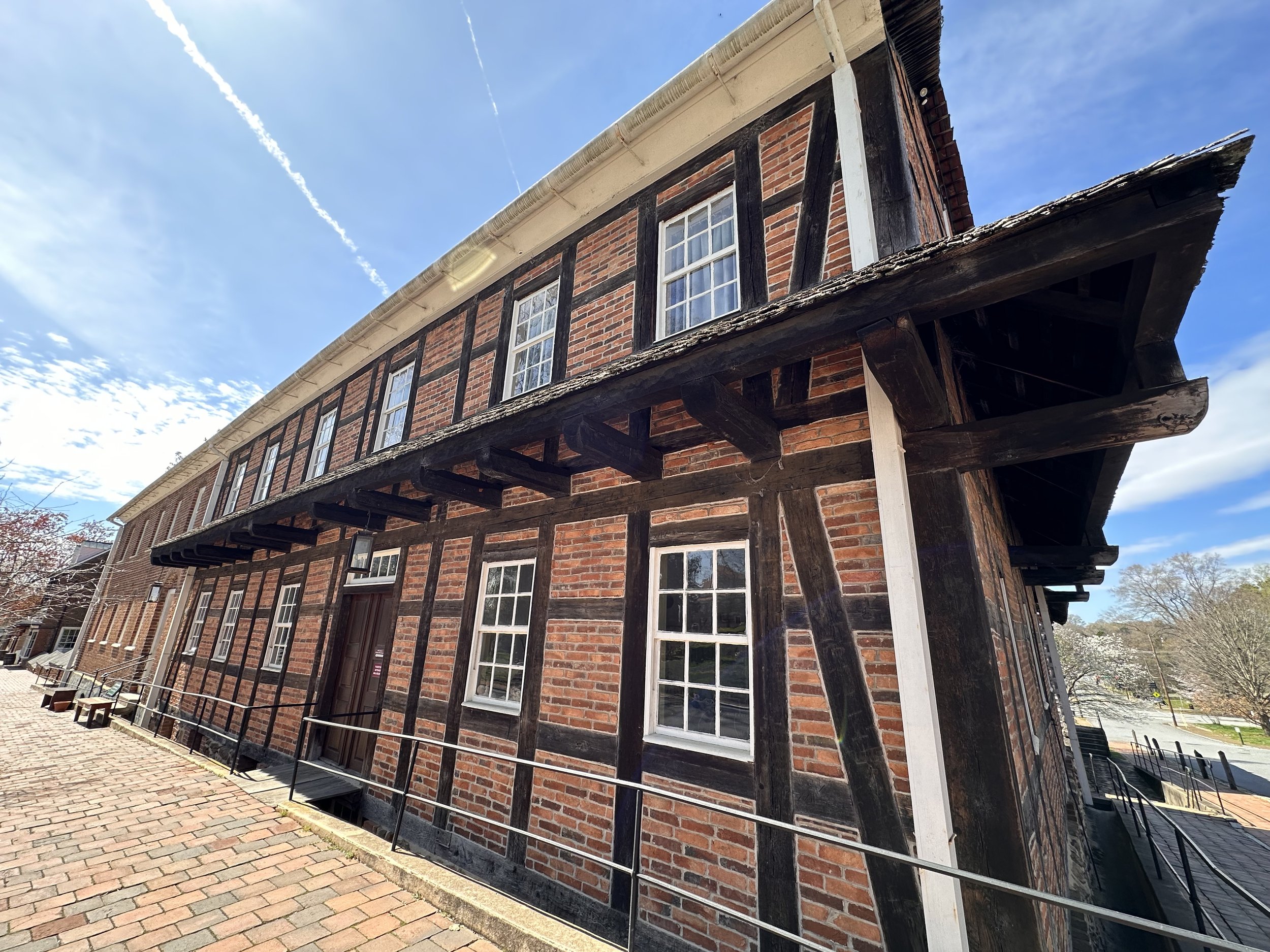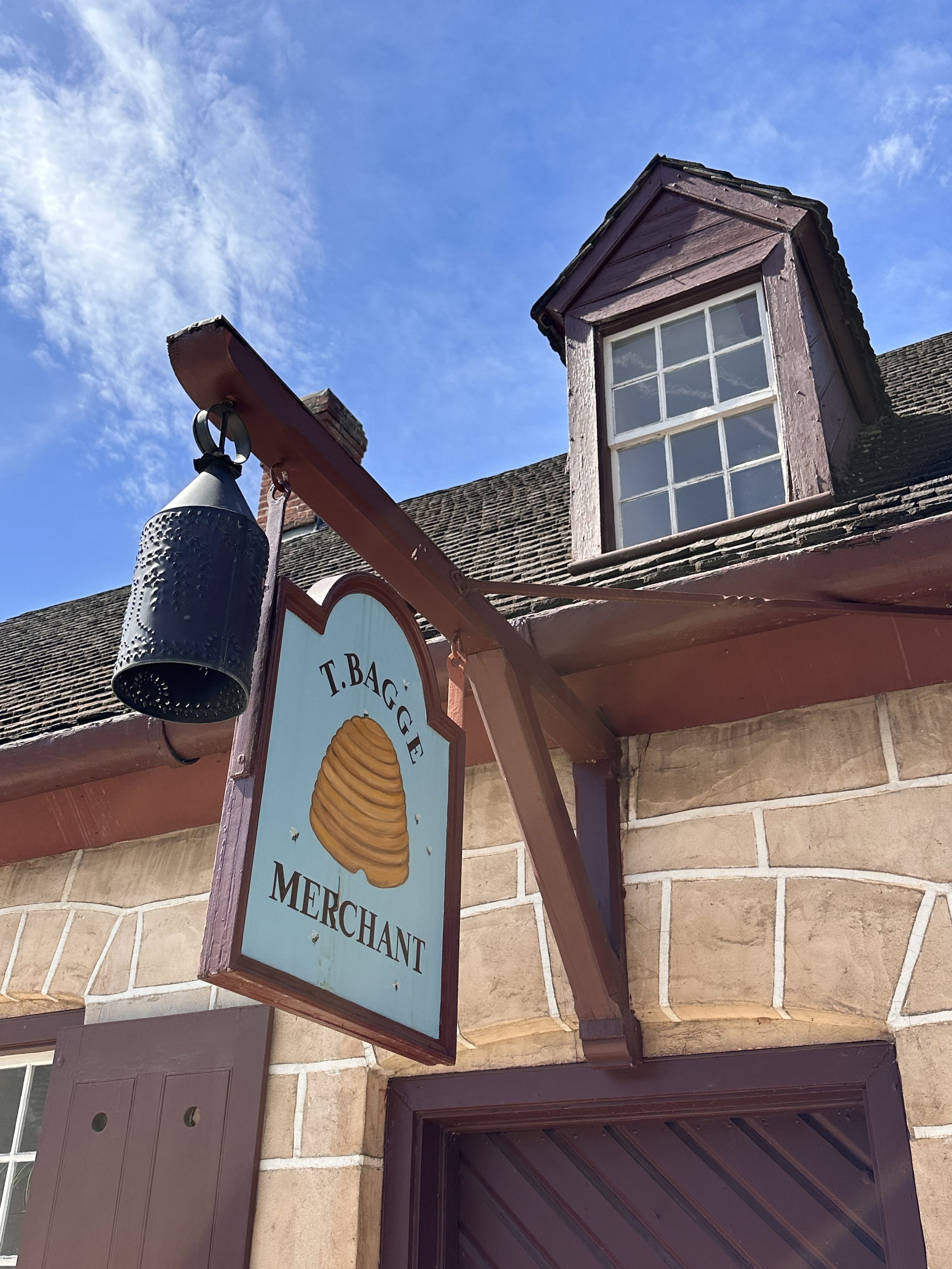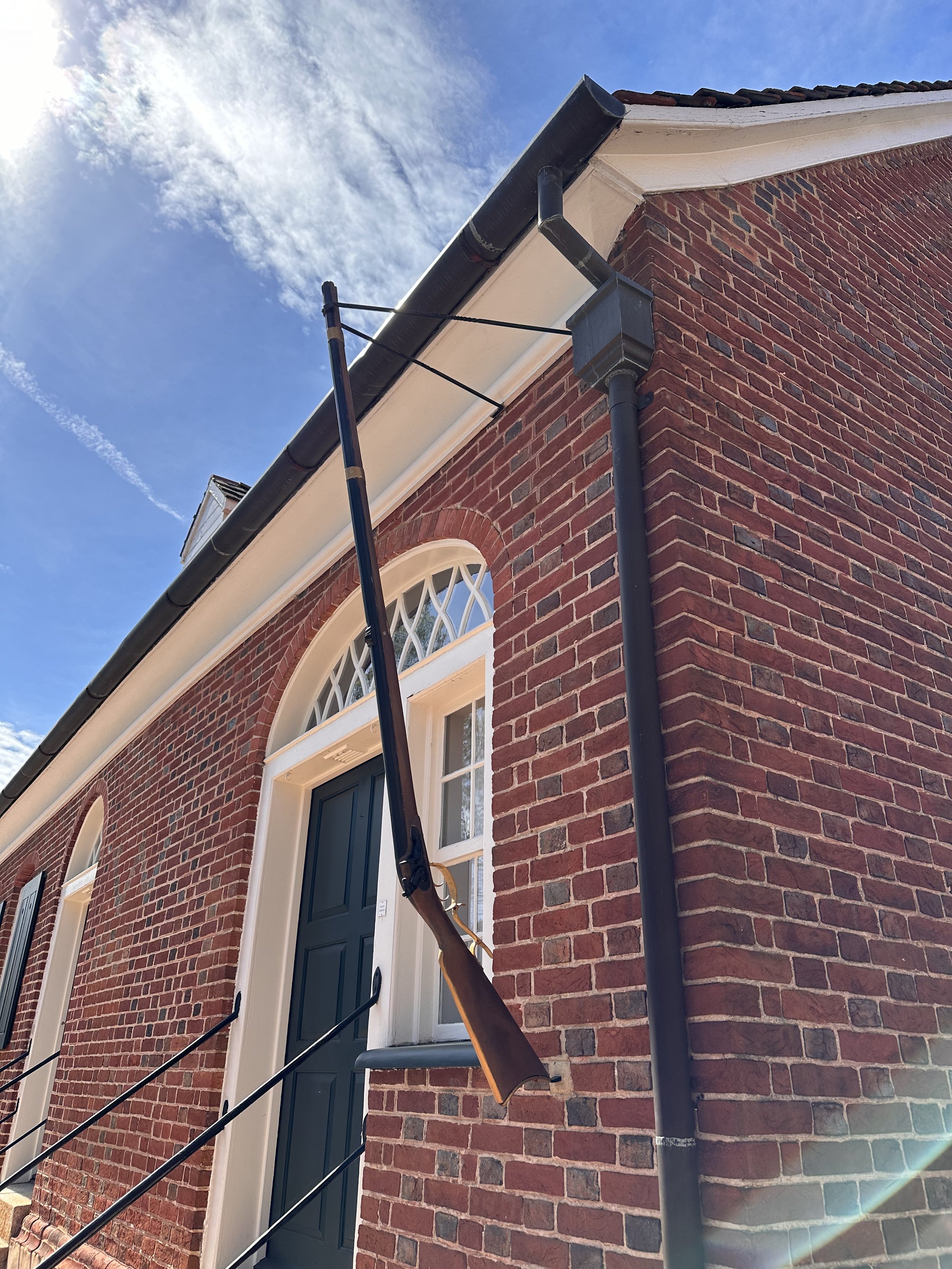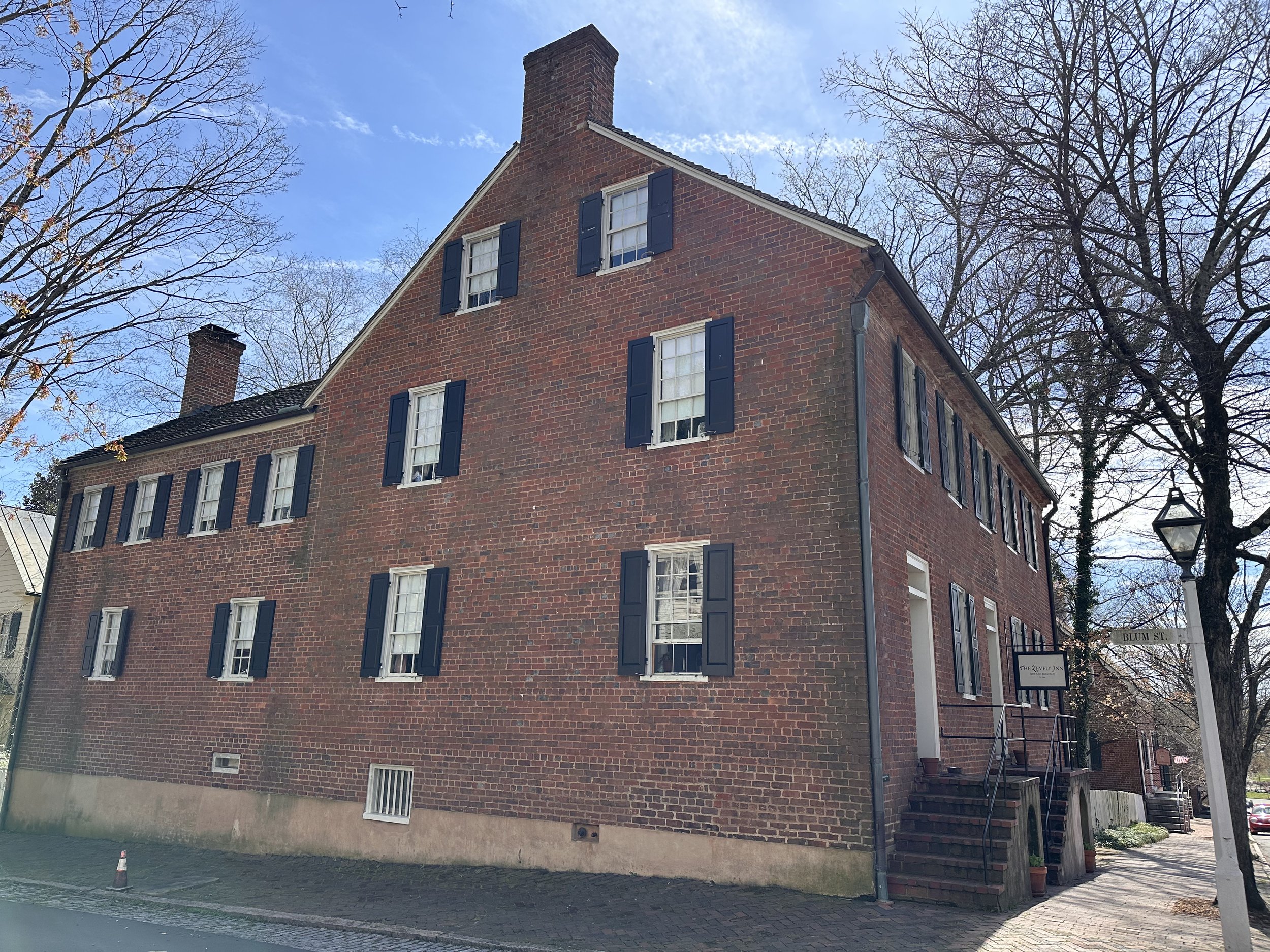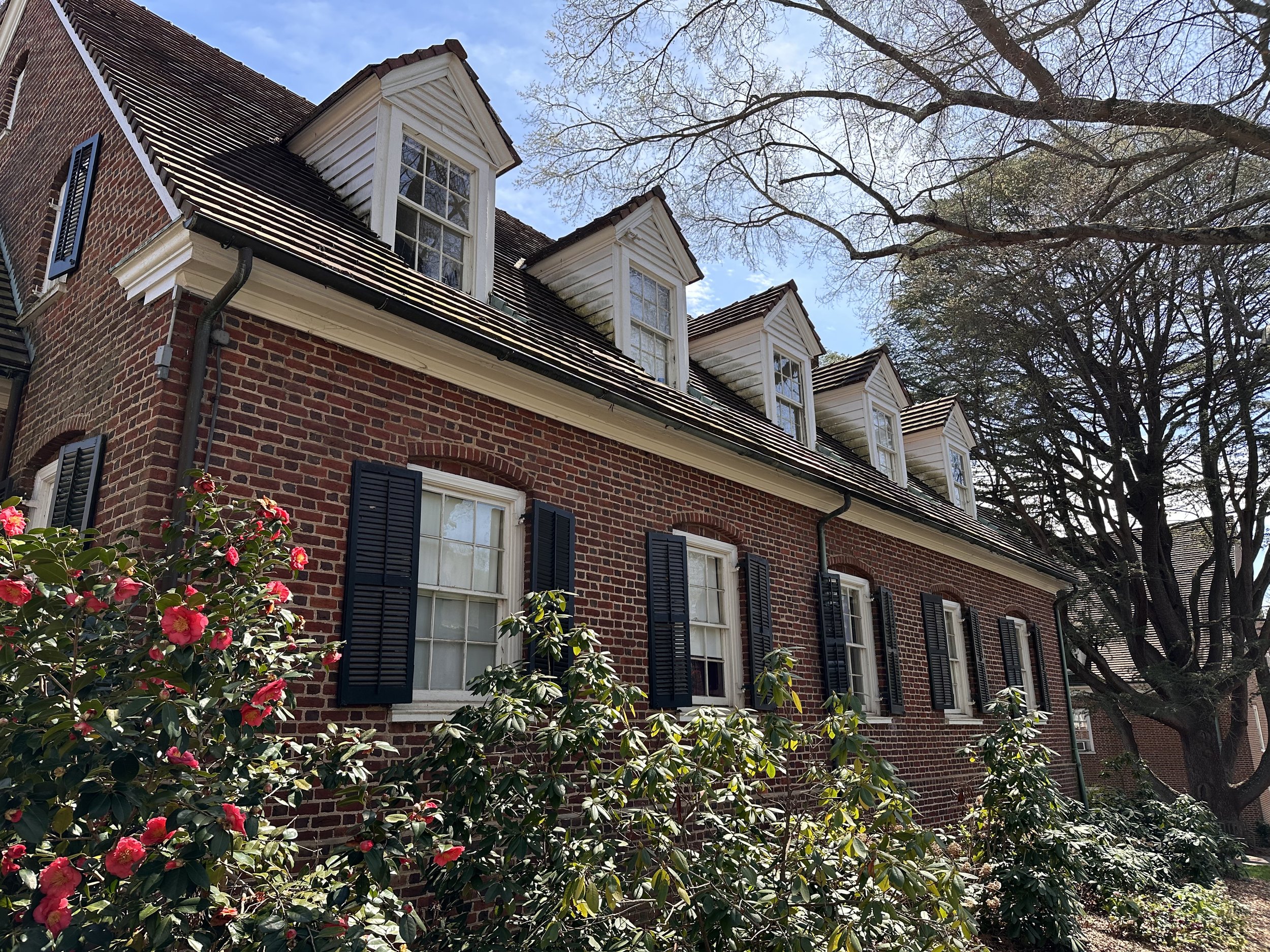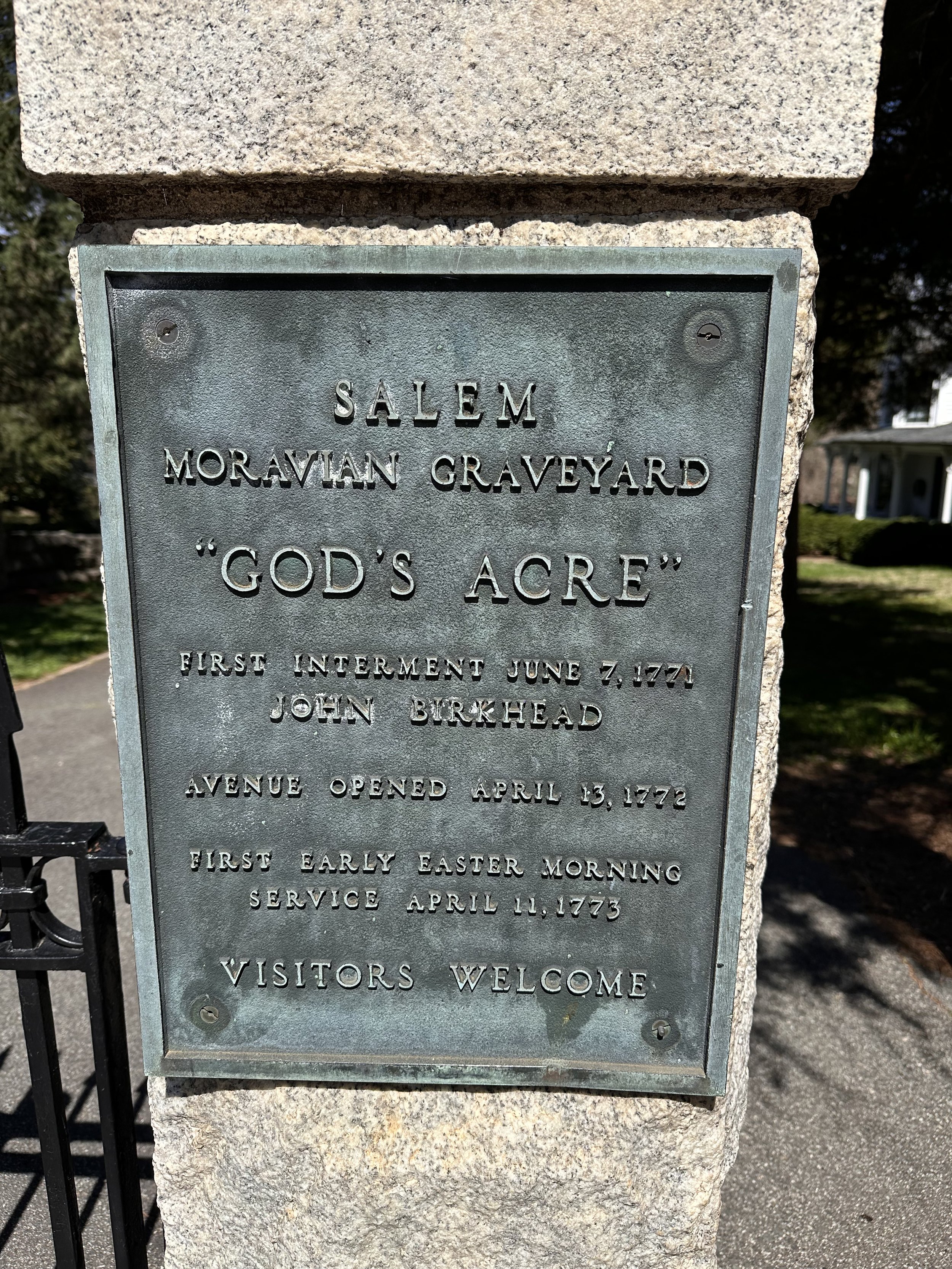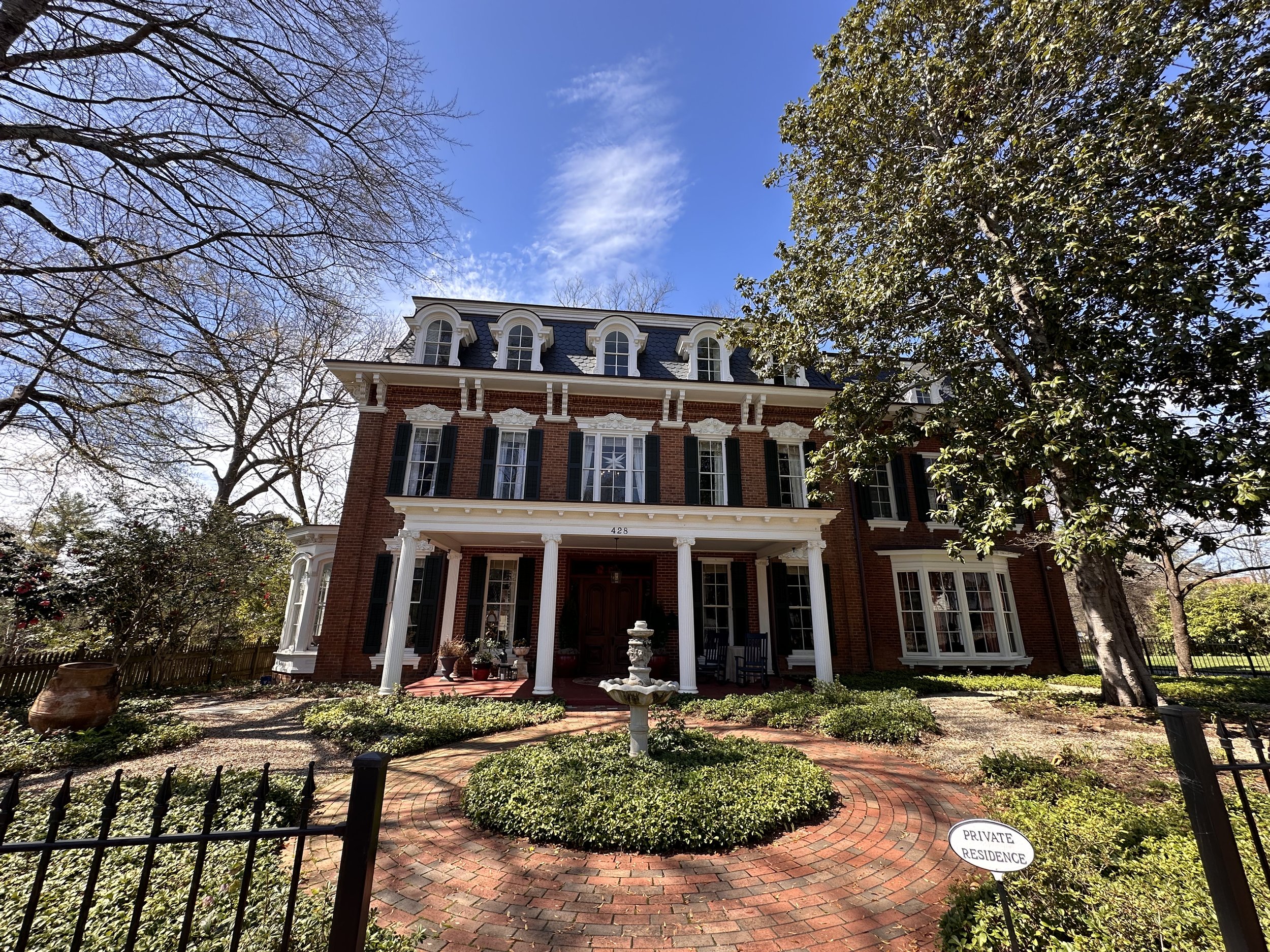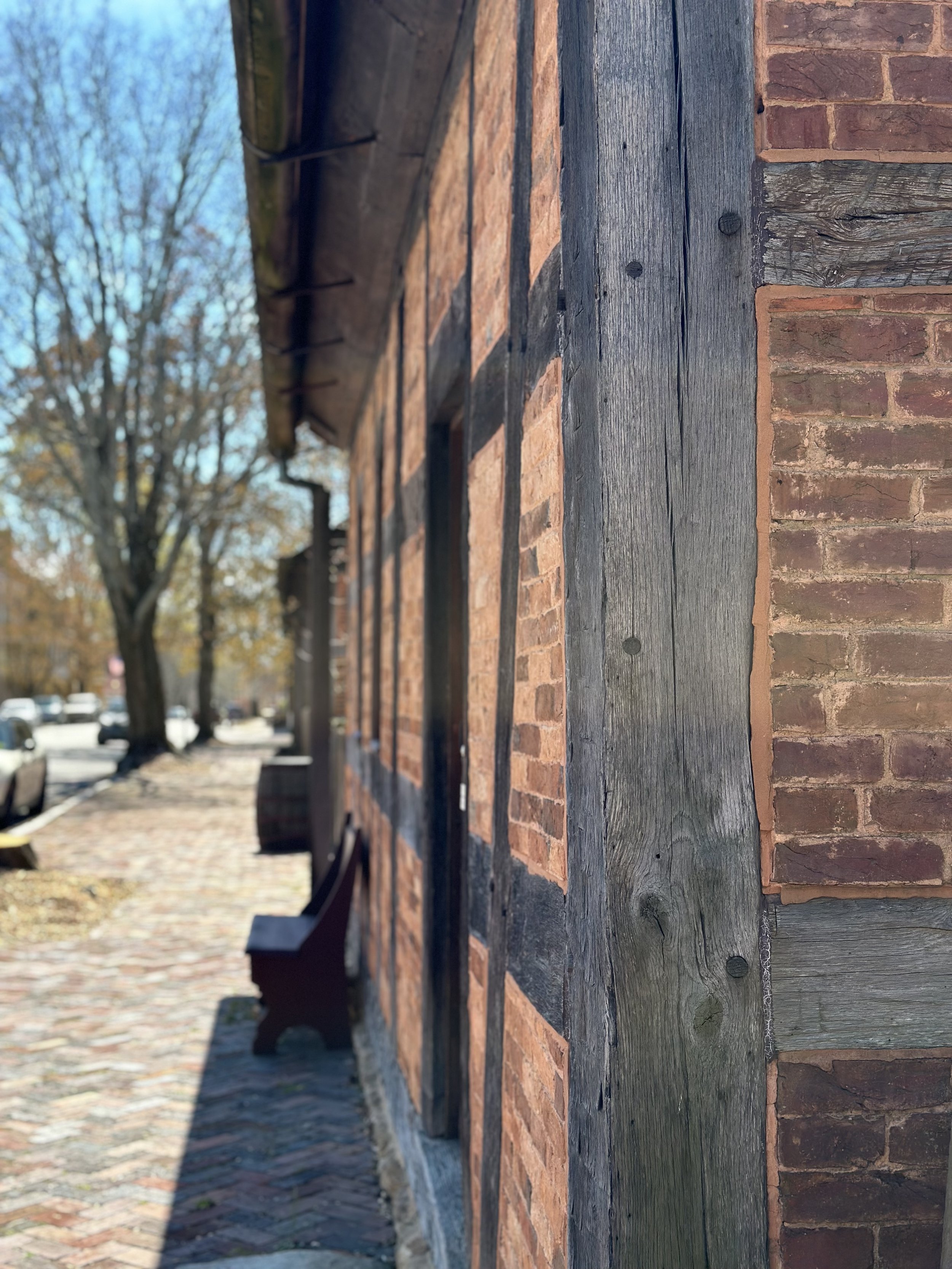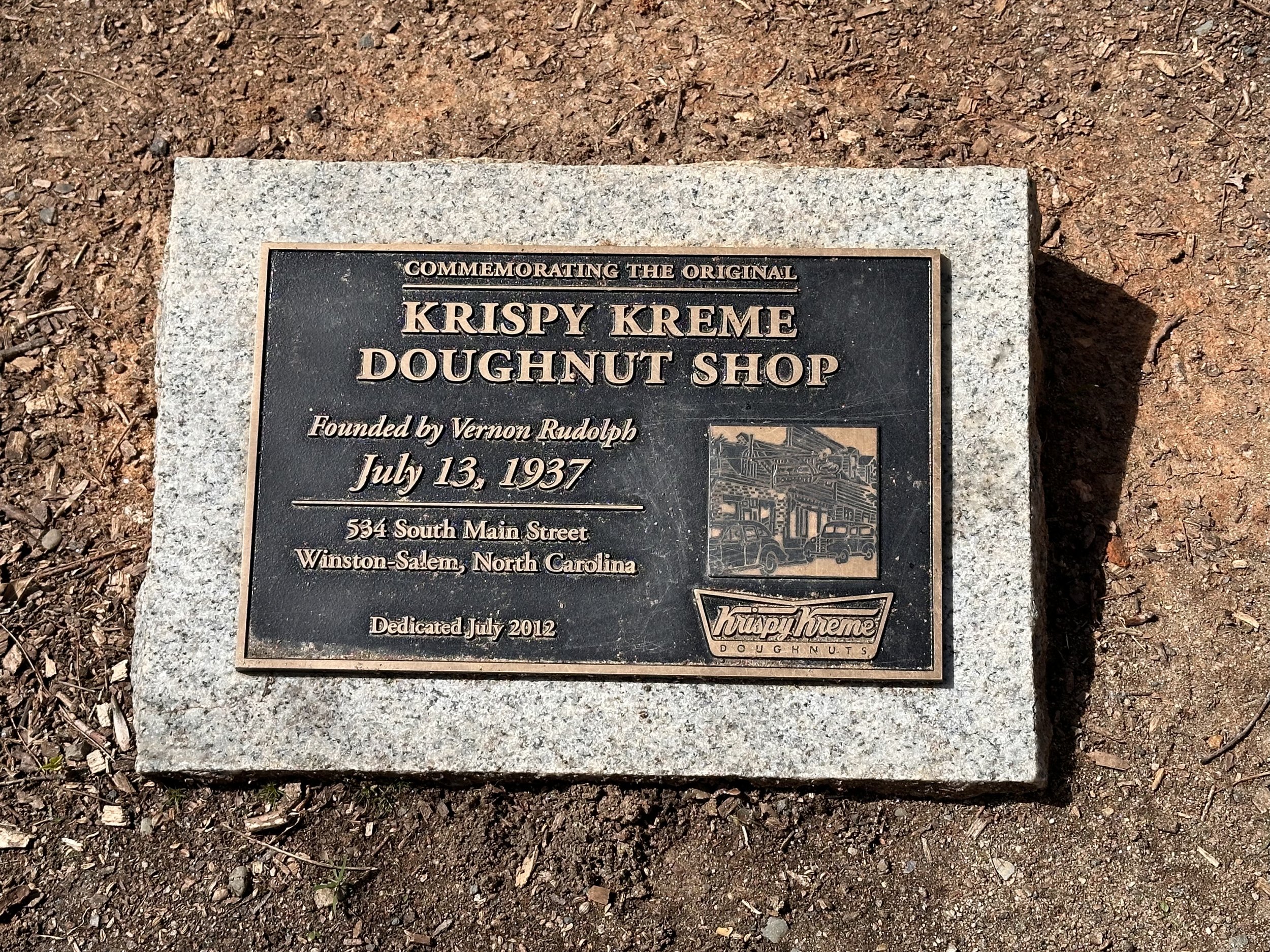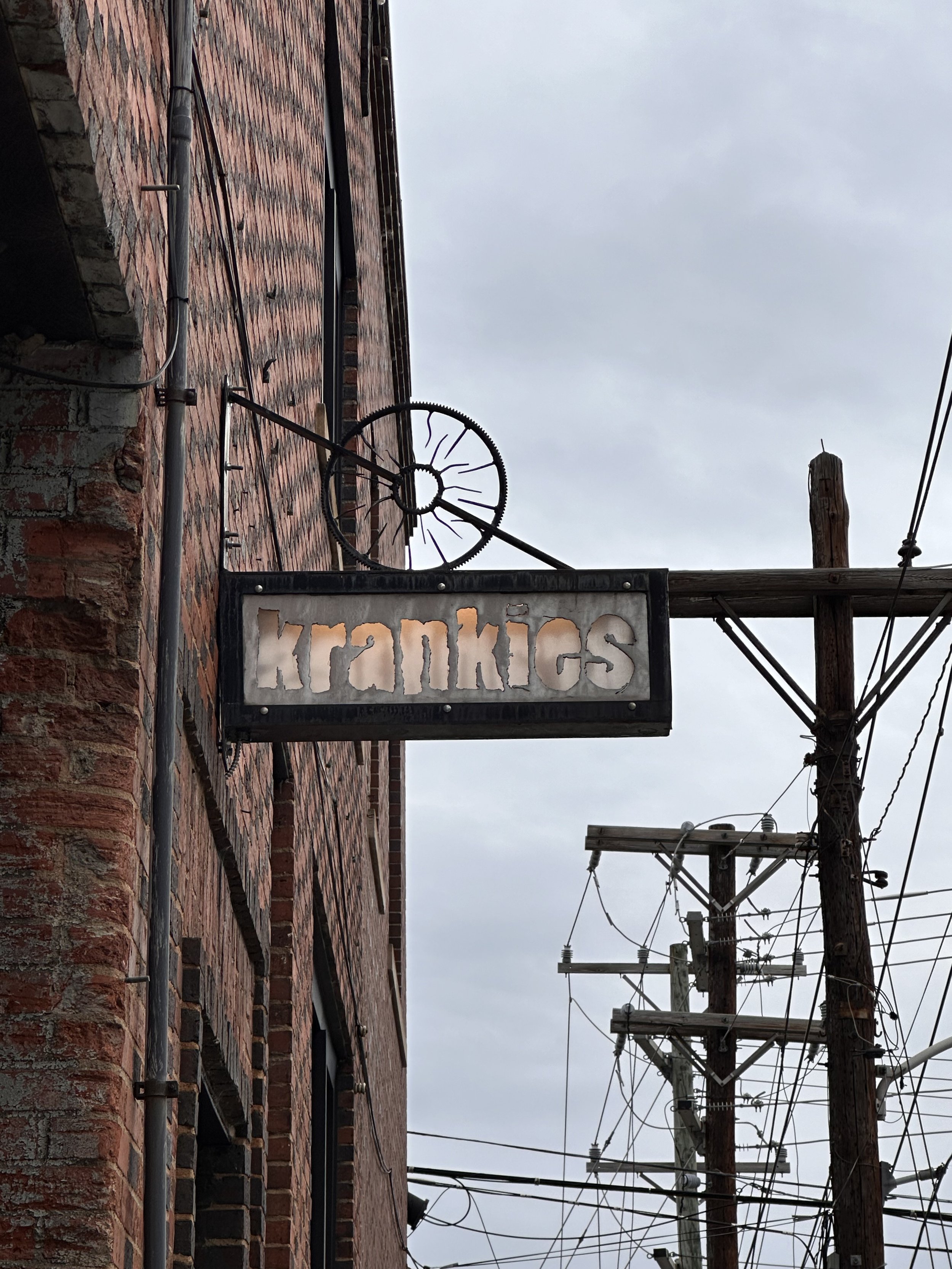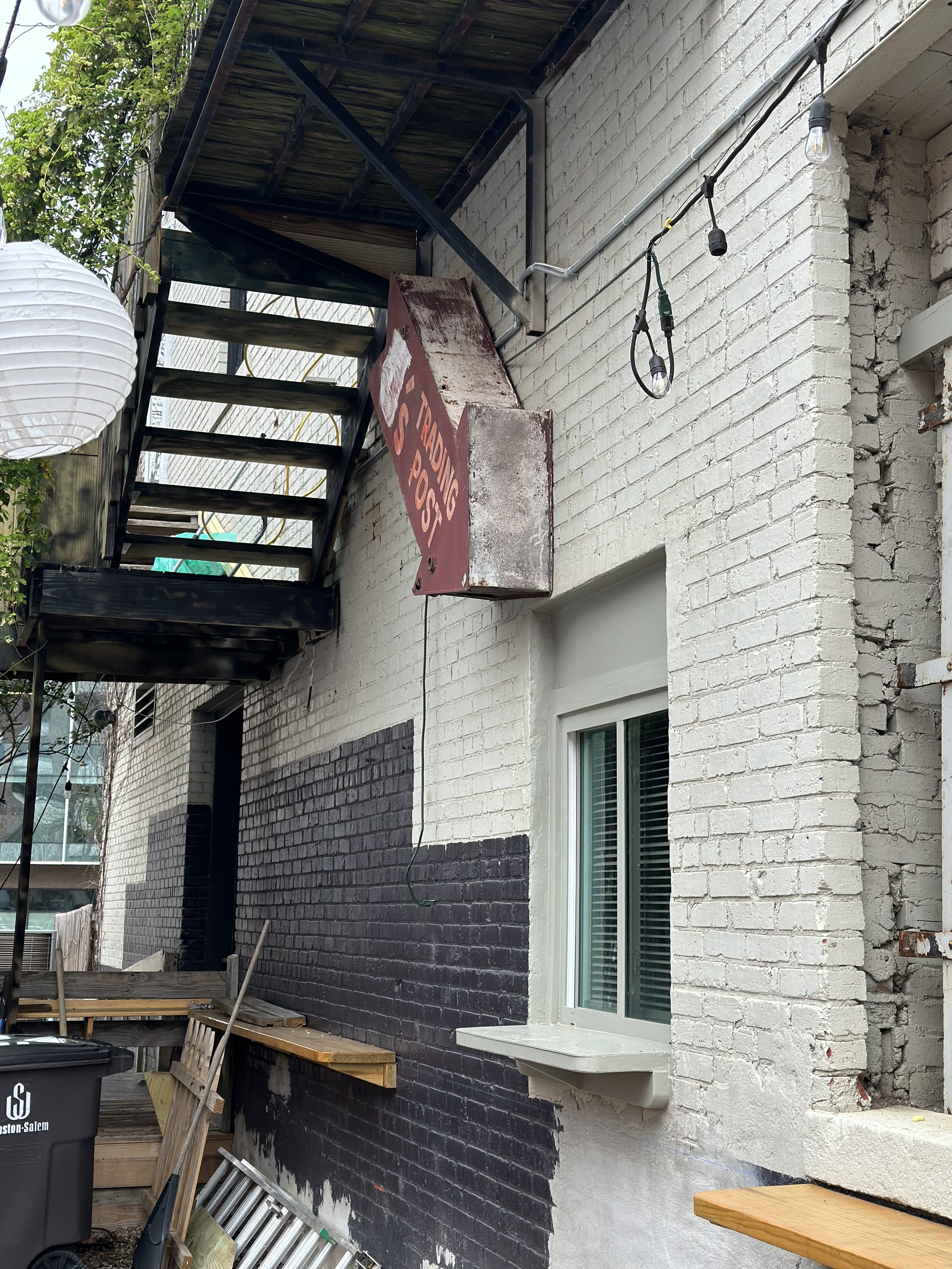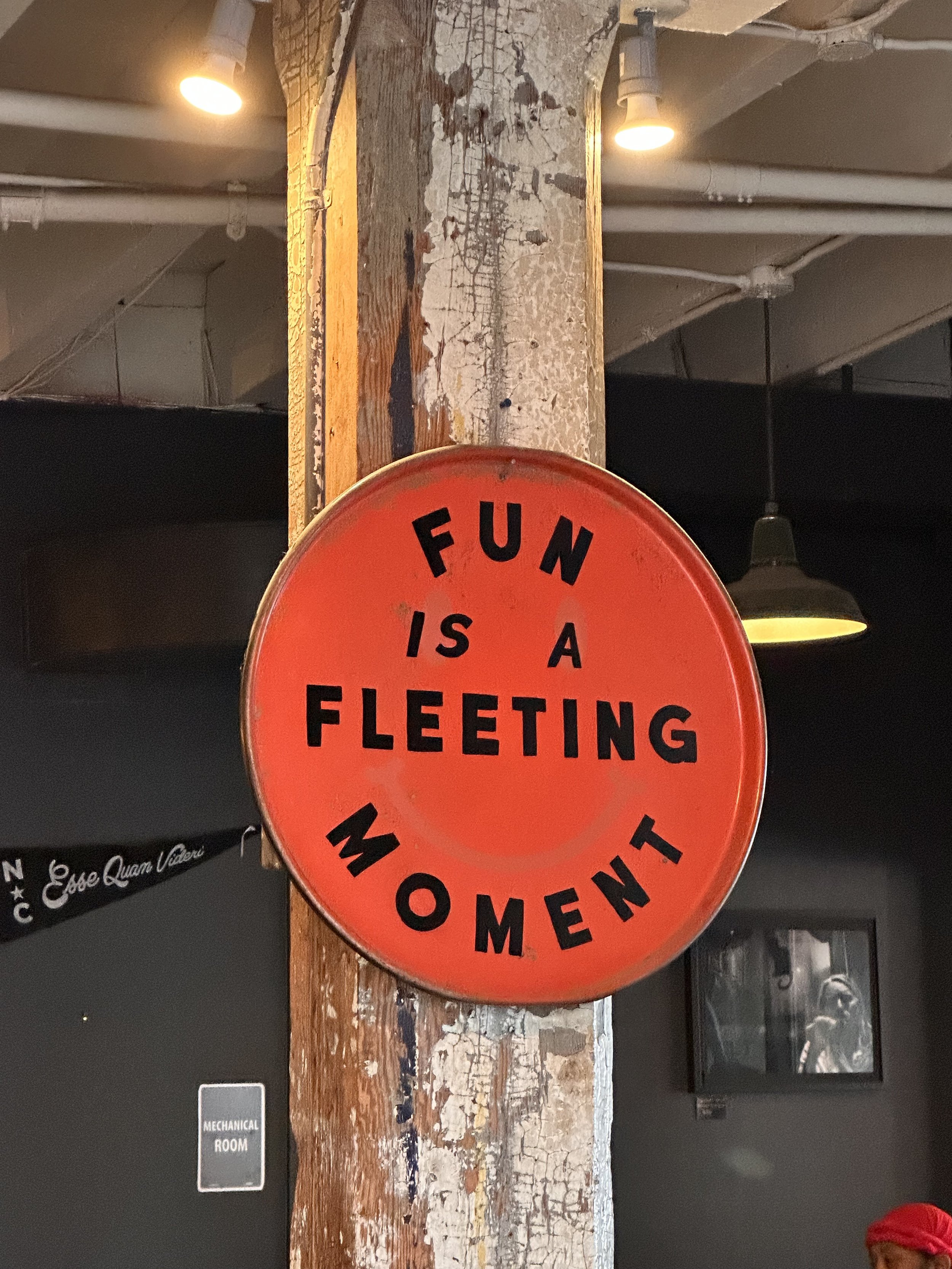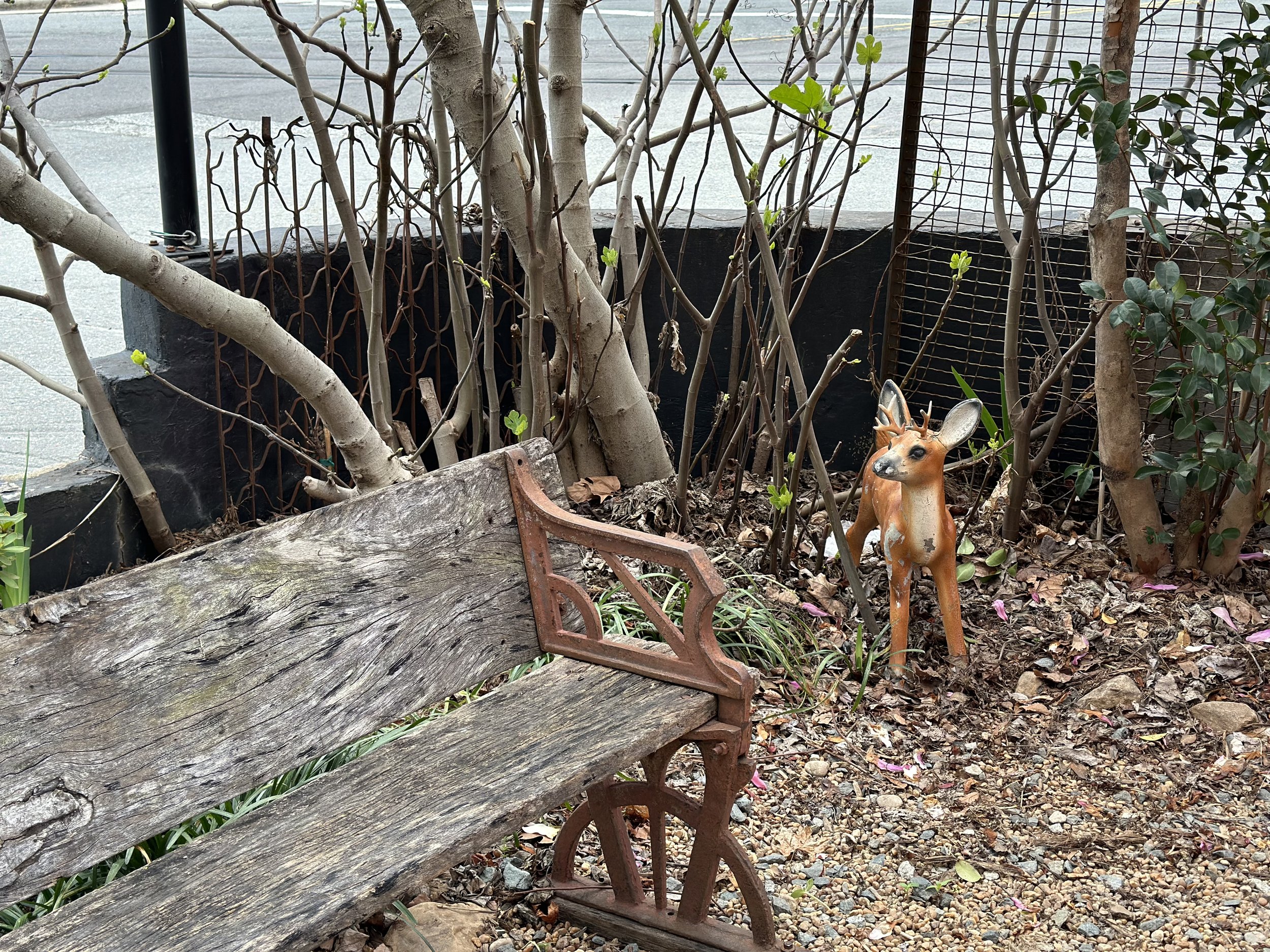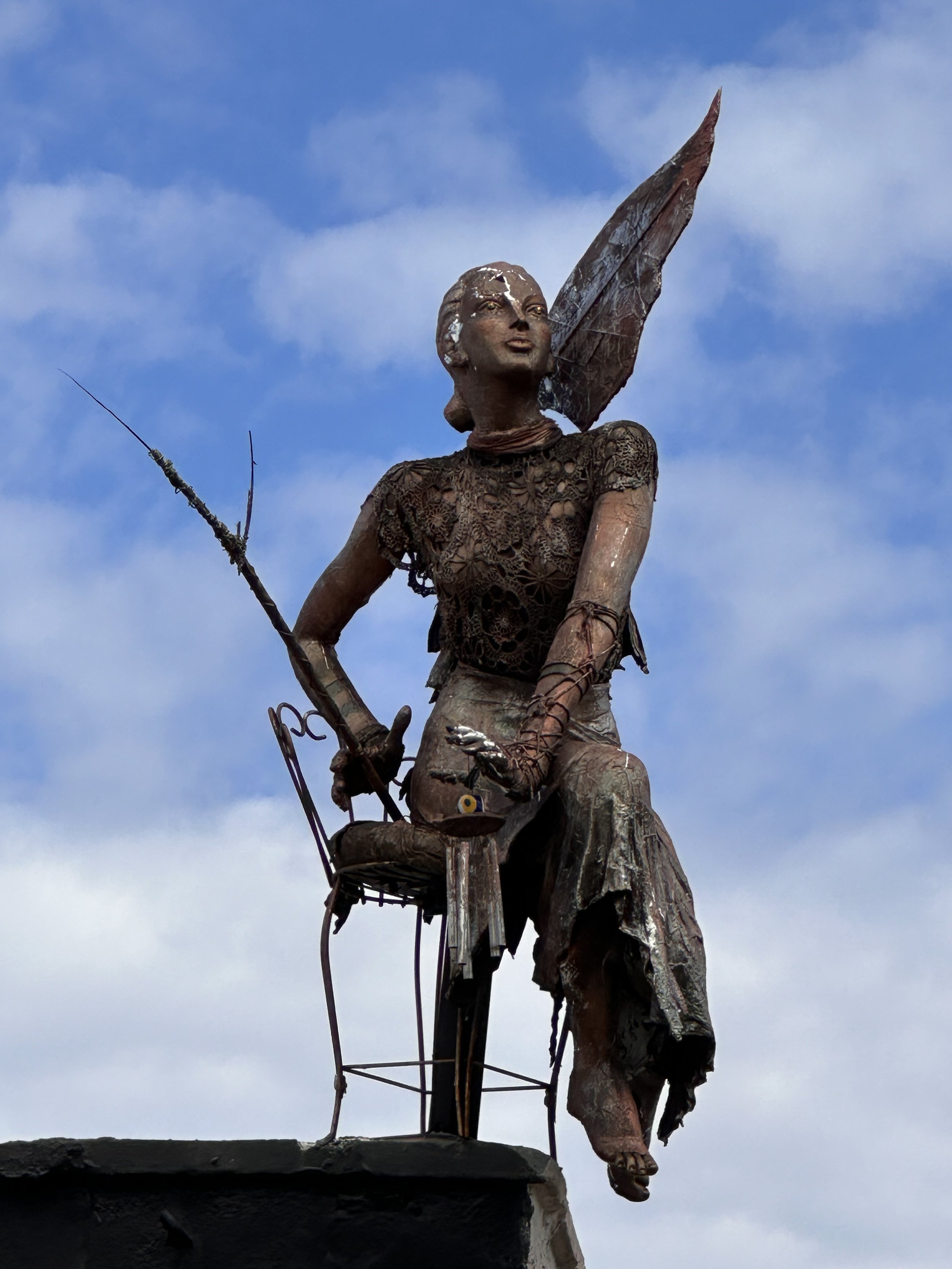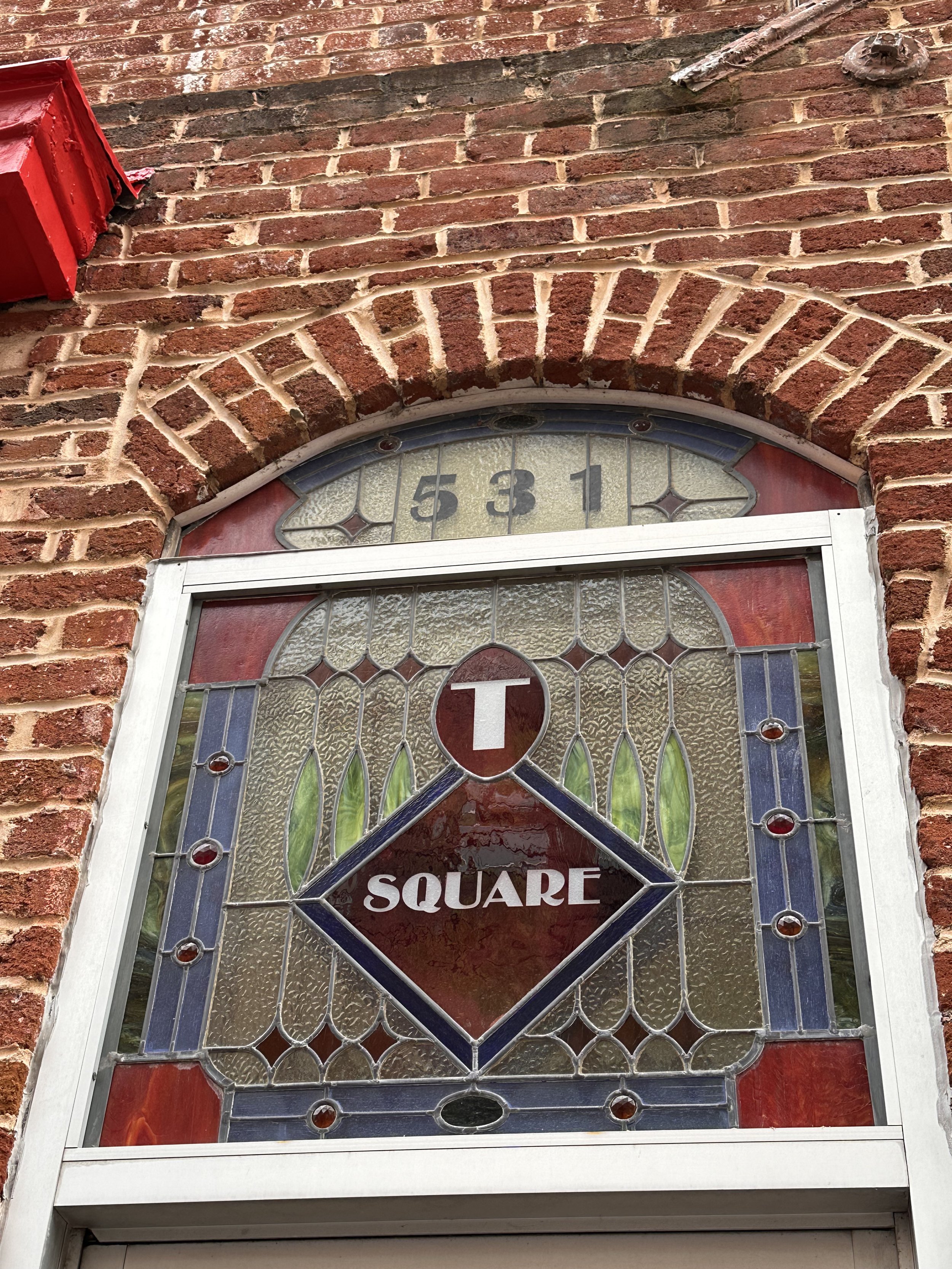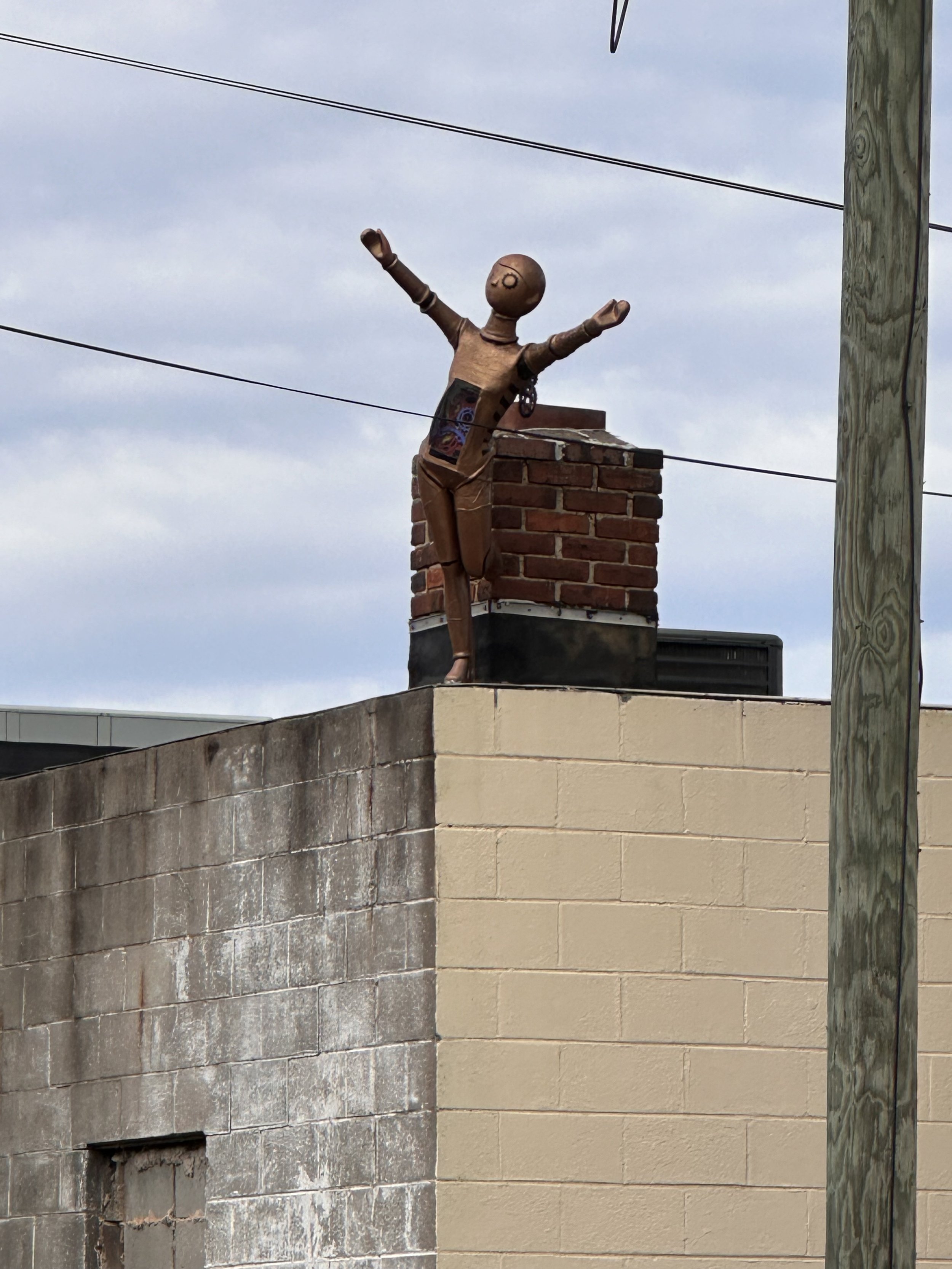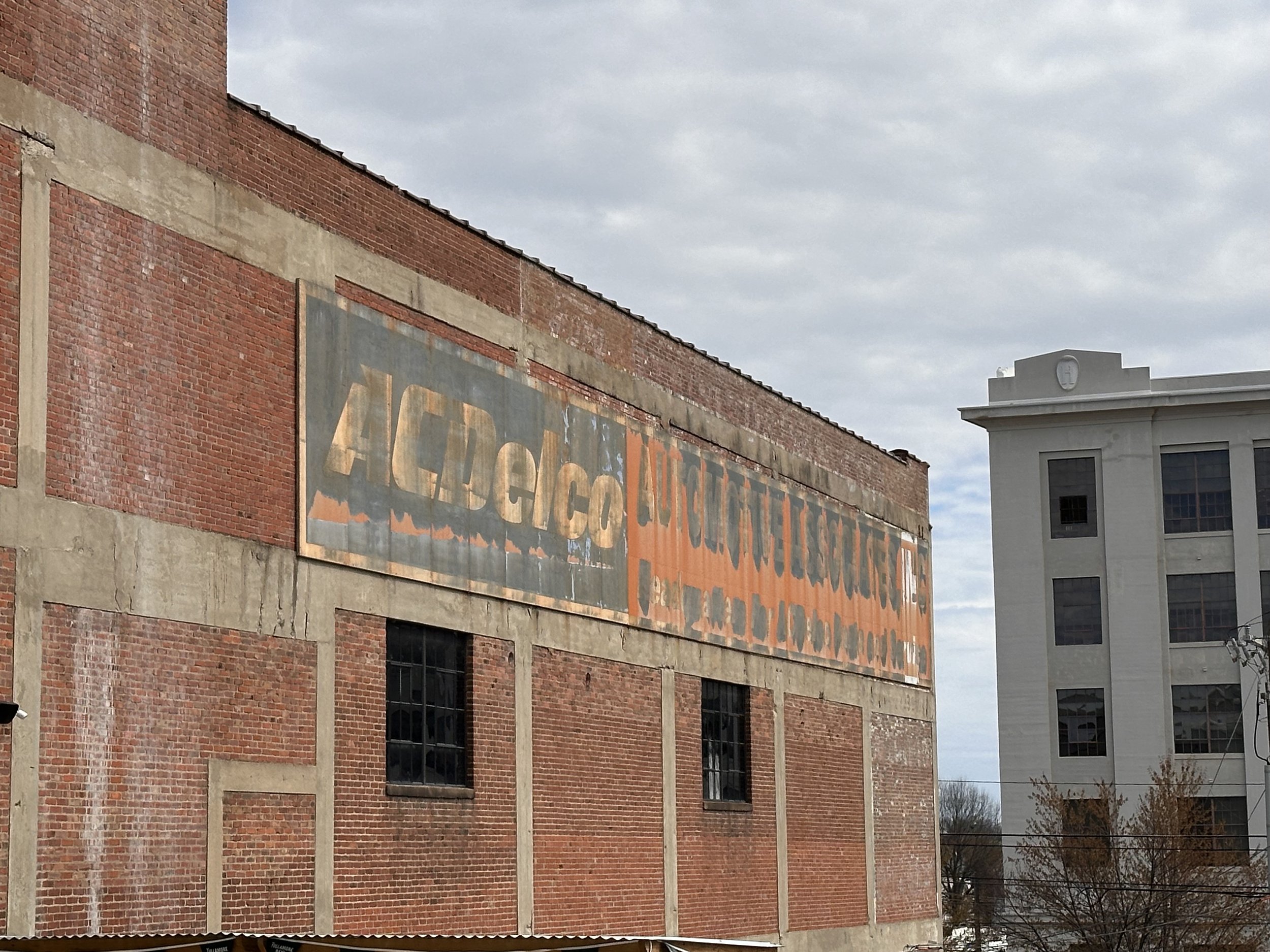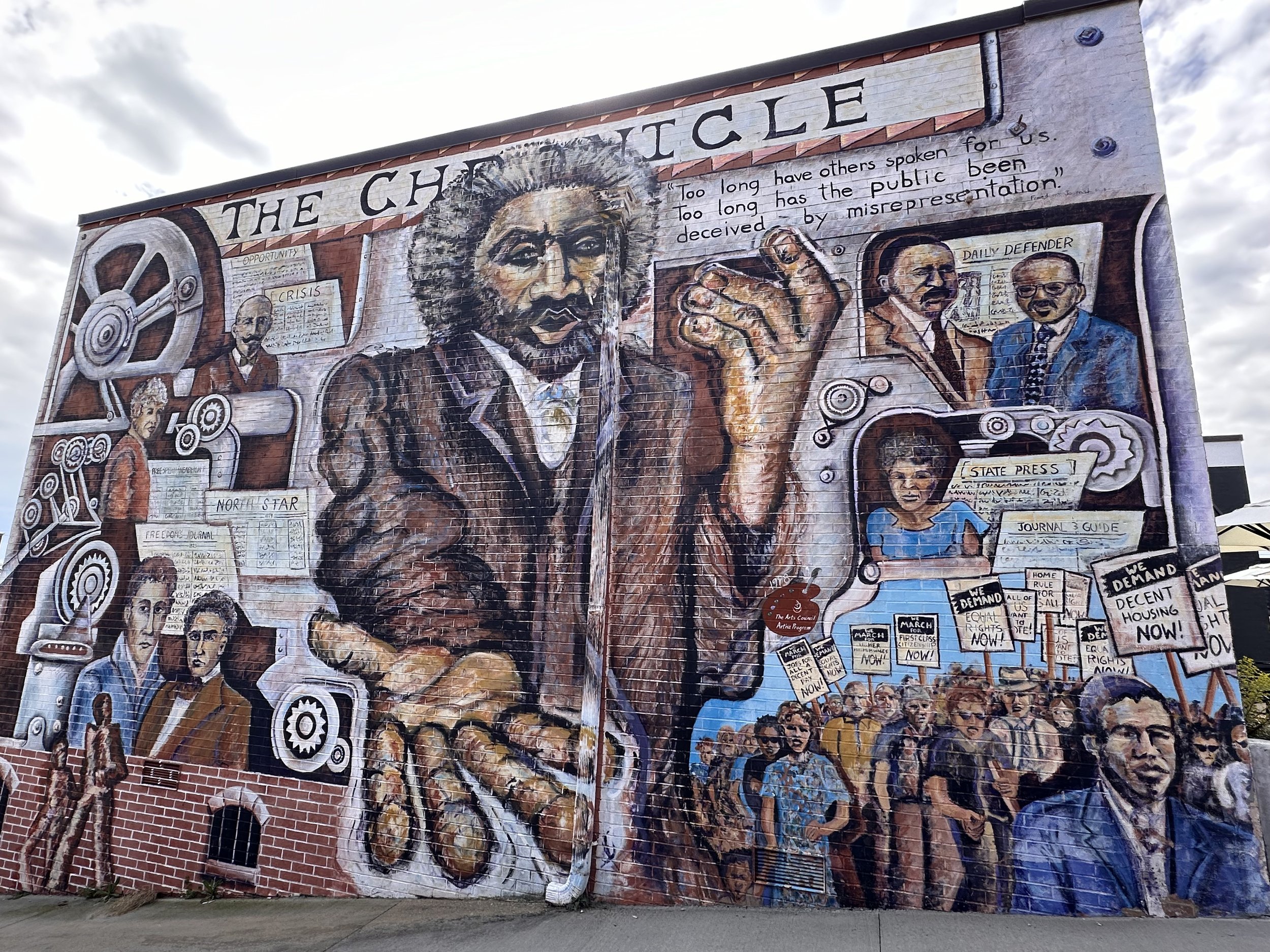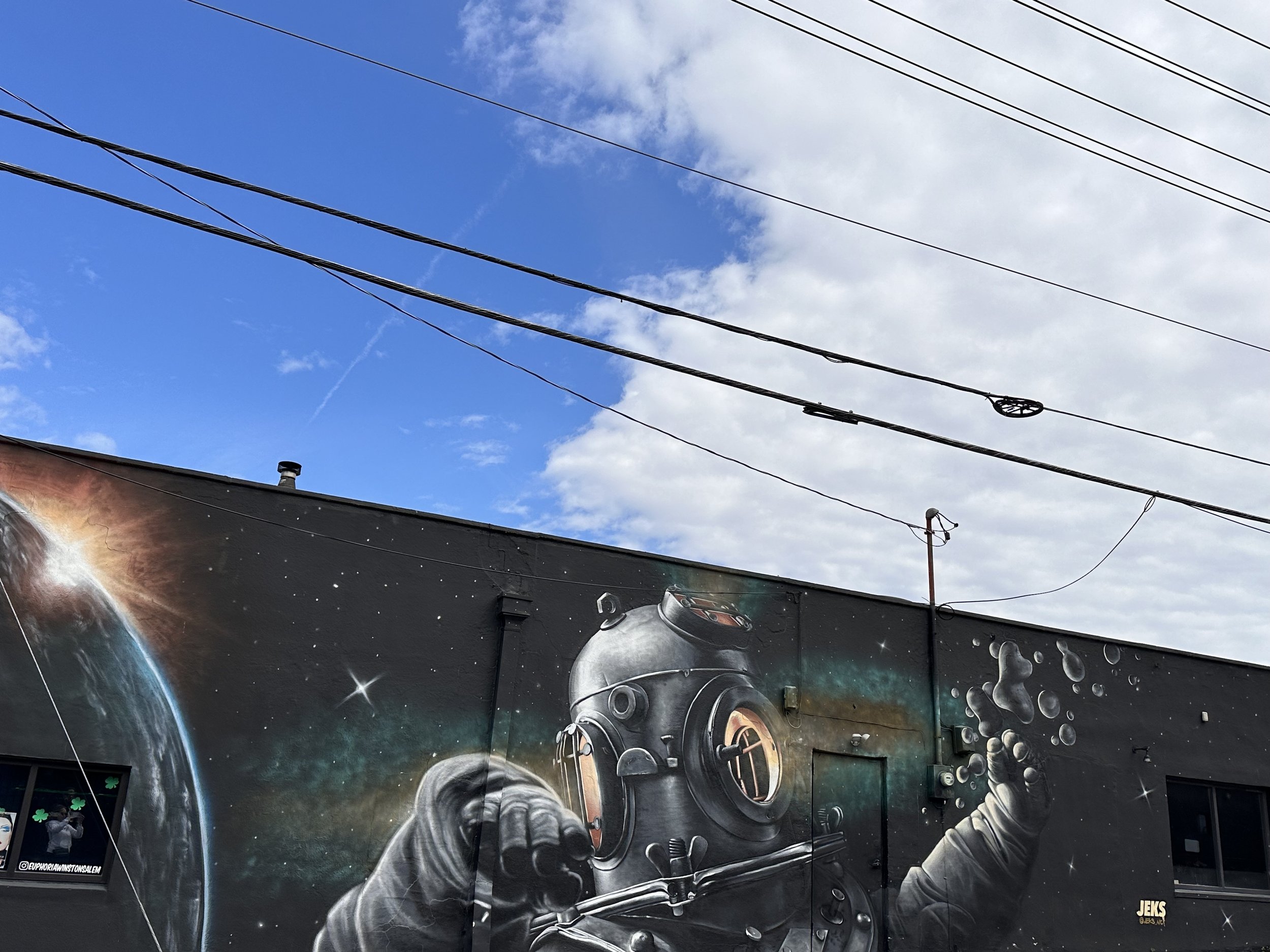Exploring Winston-Salem, NC
Time needed in this town: 2 nights
Visiting Winston-Salem is like diving head-first into a time capsule. While there are no longer scents of tobacco wafting into the air and sounds of weaving mills making clothing, the brick buildings are a very big reminder of what this town was and certainly, how they were repurposed are a nod to the future.
Heading to the other side of town is even more of a wonder as the preservation of Old Salem, from the 1700s, is very much impeccable (and very much worth an afternoon there).
TIP: Everything is closed on Sundays!
The below information is a complete guide of the best places to stay, the top rated places to dine and drink, and all there is to see and do. We’ve also included a summary of the history of this amazing town!
Jump To:
Where to Stay
Step into the 1930s, straight from the original silver revolving doors and walk across the marble-laden hallway, gawking at all of the art deco features. The Kimpton Cardinal was the old R.J. Reynolds headquarters and the inspiration for the Empire State Building. However, it didn’t start out as such.
Before it was an beautiful hotel or even an over-the-top office building, it was the site of Winston's first city hall, built in 1892 and used as the first Winston-Salem city hall after the 1913 merger with the town of Salem. When the city needed a larger city hall, the old one was torn down and in its place, in 1931, the $40 million (in today’s money) headquarters of R. J. Reynolds Tobacco Company was built.
The building was designed, just as the Empire State Building, for the purpose of corporate offices with retail outlets on the first floor. R.J. didn’t want it to be flashy… from the outside - the inside was a different story. Gray-brown marble from Missouri, black marble from Belgium and buff-colored marble from France covered the walls and floor. The ceiling was festooned with gold leaves, and the grillwork, elevator doors and door frames were bright, gleaming brass.
It was listed on the National Register of Historic Places in 2014. In 2015, Kimpton took possession of the building, stating that it would have 174 rooms on the building's first six floors, along with 36 suites, a fitness center, a restaurant and bar, and 6400 square feet of meeting space. They also said that Katharine Brasserie & Bar would be named after Katharine Smith Reynolds, the wife of R.J. Reynolds, and that it would be separate from the hotel. They also decided to use some of the floors for apartments as well.
The result, well… see for yourself above. Yes… there’s a whole game room, complete with bowling alley in the basement!
FUN FACT: There is a legend that every year, the staff of the Empire State Building sends a Father's Day card to the staff at the Reynolds Building in Winston-Salem to pay homage to its role as predecessor to the Empire State Building.
other recommendations
The Graylyn Estate - Bowman and Nathalie Gray’s former 1920’s mansion.
Where to Dine & Drink
1703
Contemporary white-tablecloth restaurant serving a changing menu of global dishes & wine.
Bad Daddy’s Burger Bar
Hip, buzzy chain serving creative burgers with gourmet toppings, plus hand-cut fries & other sides.
Barcelona Burger & Beer Garden (top-rated)
Burgers, hot dogs, fries, beer & wine served in a social setting.
Di Lisio’s
Traditional Italian restaurant offering a broad menu of red-sauce pastas, plus mix-&-match entrees.
Jeffrey Adams on Fourth
Urban eatery with a fireplace lounge, serving farm-to-fork New American cuisine & craft cocktails.
JOLO Winery and Vineyards with Restaurant
20 minutes from Winston-Salem, JOLO offers a typical wine tasting experience and has a restaurant on site.
Krankie’s Coffee
Having taken over an old RJ Reynolds factory, Krankie’s coffee is a place to see (and try) for yourself. Steeped in history, both the coffee and the food (try the gluten-free egg, cheese and sausage) are so fantastic that we went both mornings. NOTE: Service will seem slow but we promise, it’s worth it!
Also tucked in Krankie’s (as well as hundreds of other locations across the world) is an Art-o-Mat - an art vending machine by artists from all over. It’s one of the best uses of a vending machine, ever.
Graylyn Estate Manor House
From Fried Green Tomatoes to Roasted Rack of Lamb, memorable moments shine in every dish.
Midtown Cafe & Dessertery
Casual bakery & restaurant featuring classic breakfasts & hearty comfort food, plus prepared foods.
Milner’s American Southern Restaurant
Contemporary Southern cooking, craft beers & Sunday live jazz in an upscale-casual environment.
Miss Ora’s Kitchen
Serving fried chicken and fries.
Mozelles
Refined Southern cuisine & diverse wines presented in airy, bright environs with a covered patio.
TIP: Ask to be seated outside in the evening. It’s such a peaceful and relaxing place!
Oh’ Calcutta
Oh’ Calcutta brings to life the culinary traditions of Calcutta, a city known for its joie de vivre,
manifested in its rich and eclectic food culture, where traditional flavors effortlessly mingle with a cosmopolitan spirit.
River Birch Lodge
American restaurant serving elevated comfort food in a space with wooden rafters & stone fireplaces.
Rooster's - A Noble Grille
Upscale menu of Southern food & dishes with international influences made from local ingredients.
Ryan’s Restaurant
Upscale Continental destination with extensive wine list in a wooded setting overlooking a stream.
Sage & Salt
Upscale, modern American cuisine with a twist.
Spotted Cow Steakhouse
A traditional steakhouse.
The Downtown Grille
Per their description, “The Downtown Grille offers a sophisticated dining experience with delicious food and excellent service. We serve only the finest regional meats and seafood alongside a carefully curated wine list, ensuring a perfect dinner for any palate.”
The Olive Tree
An extensive menu of Mediterranean & American classic dishes in a casual setting with wall murals.
Village Tavern
Sleek & spacious eatery featuring a large menu of American favorites, plus an extensive wine list.
West End Cafe
Warm, convivial bistro featuring updated American fare & views of a lily pond from the front tables.
Things to See & Do
Broad Branch Distillery
Per their website, “With a prominent position on historic Trade Street, we’re surrounded by a phenomenal community of innovative small businesses–restaurants, bars, music venues, and the downtown Arts District. It’s safe to say that this our kind of neighborhood. We’d love to show you around. Our tasting room is open, and tours are ongoing.”
Korner’s Folly
Located minutes from Winston-Salem in Kernersville, Körner's Folly is a historic home built in 1880 by Jule Gilmer Körner. The house is said to have served originally as combination dwelling, stable, and carriage house, and featured an open carriageway running through the center of the house.
Körner made his fortune by spearheading one of the first national advertising campaigns by painting murals of Bull Durham Smoking tobacco bulls on buildings and barns across the American east coast. In the 1870s, he moved back to his hometown of Kernersville to build Körner's Folly and start an interior decorating and design business. After marrying Polly Alice Masten and having two children, Gilmer and Dore, Körner closed the carriageway and renovated the house to its present floor plan. The 22-room interior features unusual architecture and many examples of Victorian furniture and interior decoration since Körner used the house to showcase his business.
The third floor of Körner's Folly contains "Cupids Park," which the museum says is the oldest private theater in America. Jule and Polly Alice Korner built the theater as part of their "Juvenile Lyceum," which was a philanthropic project providing local children with access to the arts. Today, the theater is used by local theatrical groups and by the Körner's Folly Foundation for a puppet show, which is performed several times a year for children and visiting school groups.
The 22-room mansion is now a historic house museum that is owned and operated by the Körner's Folly Foundation, a 501(c)3 nonprofit organization. Visitors can view original furnishings and artwork, 15 fireplaces, cast-plaster details, carved woodwork, and elaborate hand-laid tiles.
Last Shell Oil Clamshell Gas Station
In the 1930s, a local distributor of Shell called, “Quality Oil” built seven stations in Winston-Salem and one in the nearby town of Kernersville. Joe Glenn and Bert Bennett, who had acquired the distribution, erected the clamshells as advertisements to attract curious customers.
When Raymond Loewy designed the current Shell symbol in 1971, it had already gone though many incarnations. Although the original 1901 brand for the London-based Shell Transport and Trading Company was a mussel shell, by 1904 the scallop shell was introduced.
It wasn’t easy to make shell-shaped gas stations. The office and bathroom area were boxed in, surrounded by a bent wood and wire frame, and then covered in stucco. This last station remained open until the 1950s and housed a lawn mower repair business in the 1970s and 80s. In 1976, it became the first individual station in America to be listed on the National Register of Historic Places.
If you choose to stop by and peek in (through the windows), you will see framed newspaper articles about its opening, a clamshell station calendar, antique black-and-white photographs, a teddy bear, old Shell signs, a coffee mug, miscellaneous antique cans, and a tin of vintage Monkey Grip Patch. A coffee table book has been left open to a picture of the station, and an antique red container labeled “Shell” sits in a corner.
Preservation North Carolina still holds protective covenants on the property, so the clamshell will be preserved in perpetuity.
HOW TO GET THERE: Located on the quiet corner of Sprague and Peachtree Streets. NOTE that it is at a 4-way light, so take caution with any traffic.
Mt. Airy
Just 30 min. NW of Winston-Salem is the great town of “Mayberry” (or as most of us know, the home of the Andy Griffith Show). And, while this town was steeped in its own history, long before it was immortalized in the 1960’s, it’s the chief reason why people make a day of it. Below are what you can experience in this little, well-preserved town:
The Andy Griffith Museum provides a permanent place for the world’s largest collection of Andy Griffith memorabilia. Located next to the Andy Griffith Playhouse and a half-mile from Andy’s boyhood home, the museum houses items collected by childhood friend Emmett Forrest.
The museum includes iconic signs from the show’s courthouse doors that read: “Sheriff” and “Justice of the Peace.” There are also mementos from Don Knotts who played Deputy Barney Fife, actress Betty Lynn who plated Thelma Lou and George Lindsey who played Goober.
NOTE: Don’t miss theTV Land bronze statue that captures The Andy Griffith Show’s iconic opening sequence depicting Andy Griffith and young Ron Howard in their roles as Sheriff Andy Taylor and Opie Taylor.
Andy Griffith attended elementary school here and performed on stage here during the 1930s and 1940s. The playhouse was originally built in the 1920s and was the first public school in Mount Airy.
The Surry Arts Council now operates the building with year-round classes, theatre productions, art camps, and live music concerts. The museum is adjacent to the playhouse along with the TV Land landmark statue of Andy and Opie.
Andy’s Homeplace (RENT IT!)
Guests can stay in the Mount Airy home where the Andy Griffith actor lived during his adolescence until his high school graduation. The house contains antiques and is decorated in a 1930s-1940s style with Griffith memorabilia. Andy’s boyhood home is available for nightly rentals and is within walking distance from downtown Mount Airy, including Snappy Lunch mentioned on The Andy Griffith Show, Floyd's Barbershop, The Andy Griffith Collection, Opie's Candy Store, and Mayberry Soda Fountain.
The late Frances Bavier, better know as "Aunt Bee,” has a room dedicated to her memory at the Mayberry Motor Inn. You can enjoy the exhibit through a window view inside the inn. The inn holds a certificate of authenticity for more than 30 of Bavier’s belongings, such as gloves, eyeglasses, a handkerchief, a dress, a hat, and more. A great photo opportunity is having a picture taken in front of the Mayberry Squad Car or Emmett’s Truck.
The Mayberry Courthouse is a replica of the courthouse that appeared in “The Andy Griffith Show” during the 1960s. Situated adjacent to Wally’s Service Station, visitors can sit behind Andy’s desk, type on the vintage typewriter, and even sit in the recreated jail cells that appeared in the show. This is a great picture-taking spot.
In Mount Airy, you can tour all of the sites in a Mayberry squad car. Each tour starts at Wally’s Service Station, then it will travel up and down the streets of Mount Airy, where you will learn stories about Andy Griffith and Mayberry, history of the town, Floyds Barber shop, the TV Land statue, Snappy Lunch, Andy Griffith Playhouse, the childhood home of Andy Griffith, and the world's largest open-face granite quarry. Please call ahead to schedule a tour, especially during summer and fall seasons. Keep in mind that winter hours are limited - always call before visiting.
Opened on the 1920s to serve snappy lunches to workers of Mount Airy, Snappy Lunch hasn’t changed much as visitors will find the same diner that Andy Griffith ate at as a young boy while growing up in Mount Airy.
The restaurant is famous for its pork chop sandwich, a boneless, tenderized loin chop dipped in sweet-mile batter and fried until golden crisp. In an early episode of “The Andy Griffith Show,” Andy suggested to Barney that they go to the Snappy Lunch, and Andy also mentioned the Snappy Lunch in his version of the song "Silhouettes."
Wally’s Service Station and Mayberry Courthouse
Wally’s Service Station is an original service station built in 1937 and operated as a Gulf Station and then later operated as a Standard Oil Station or Esso.
The Fruit Basket now operates inside of Wally's Service Station and they offer a wide variety of souvenirs and collectibles. Mayberry Squad Car Tours also leave from the station and return to the same location.
On-site is the Mayberry Courthouse and Otis' Jail Cell and other replicas of the set of the show. Also on-site is The Mayberry Hotel replica/gift shop. The service station is open year-round, with hours that depend on the season.
Old Winston-Salem
Salem was originally settled by members of the Moravian Church, a Protestant denomination that first began in 1457. In 1722, the German-speaking exiles finally found protection on the estate of Count Zinzendorf, a Saxon nobleman, where he allowed them to create the village of Herrnhut as their home. First settling in North America in Savannah, in 1735, they moved to the Province of Pennsylvania in 1740, where they founded several communities (Bethlehem, Nazareth and Lititz). Because of development pressures, they looked for more space to create their church communities. Purchasing just over 98,985 acres from John Carteret, 2nd Earl Granville, one of the British Lords Proprietor, in the Piedmont of the Province of North Carolina in 1753, they sent groups from Bethlehem to begin construction. They founded the transitional settlement of Bethabara in 1759 and constructionbegan in 1766 to build the central economic, religious, and administrative center of the tract.
The worldwide Moravian Church initially owned the property, but Salem Congregation purchased the 5 square miles town lot outright in 1826. All people in the communities had to be members of the church and could be expelled from the town if they acted contrary to the community's regulations.
In 1849, Forsyth County was created, but Salem was unwilling to be the county seat and sold property directly to the north to become the new courthouse town. This town became Winston, which quickly grew into a thriving industrial center. Eight years later, the church divested control of the town and allowed the residents to purchase their property. Salem then became a legal municipality. The town expanded twice, in 1889 and 1907, and merged with Winston in 1913, to become Winston-Salem.
Today, ownership of the buildings and land is divided among Old Salem, Inc., Wachovia Historical Society, private owners, Salem College, Salem Academy and Salem Congregation.
Site of First Krispy Kreme
Vernon Rudolph founded Krispy Kreme in Winston-Salem, North Carolina, and produced the first Krispy Kreme doughnuts on July 13, 1937. According to the company’s website, people walking up the street would be able to smell the hot doughnuts and would often stop and ask to buy them hot. As demand grew, Vernon actually cut a hole in the side of his building to sell hot doughnuts directly to the public.
The Mickey Coffee Pot
A historic landmark, this large, tin coffee pot was built in 1858 by Moravian tinsmiths, Julius and Samuel Mickey. It was made as an advertisement for their tin shop on South Main Street. In 1959, it was relocated to the north end of Old Salem.
Reynolda house of american Art
The Reynolda House Museum of American Art displays a premiere collection of American art, ranging from the colonial period, to the present. Built in 1917 by Katharine Smith Reynolds and her husband, R. J. Reynolds, founder of the R. J. Reynolds Tobacco Company, the house originally occupied the center of a 1,067-acre estate. It opened to the public as an institution dedicated to the arts and education in 1965, and as an art museum in 1967. The house holds one of the country's finest collections of American paintings.
wandering downtown
Winston-Salem has done an amazing job repurposing the old buildings and revitalizing the area. Definitely spend time wandering the streets to not only see some fantastic art installations, but also find hidden historical elements of a bygone era.
A History Summary
1753 - Bishop August Gottlieb Spangenberg, on behalf of the Moravian Church, selected a settlement site in the three forks of Muddy Creek. The first settlers arrived at what would later become the town of Bethabara. This town, despite its rapid growth, was not designed to be the primary settlement on the tract.
1759 - Lots were drawn to select among suitable sites for the location of a new town. When established, the town was given the name of Salem (from "Shalom", Hebrew meaning "Peace"), chosen for it by the Moravians' late patron, Count Zinzendorf.
1766 - The first tree was felled for the building of Salem, which only members of the Moravian Church were permitted to live in the settlement until the America Civil War.
1772 - Salem Square and God's Acre Cemetery, the Moravian graveyard, have been the site of the Moravian sunrise service each Easter morning and still are today.
1807 - The congregation brought in Christian Winkler of Pennsylvania to operate the bakery; his family owned and operated the business until 1929. It continues to operate today as part of Old Salem.
1849 - 1851 - The Salem Congregation sold land north of Salem to the newly formed Forsyth County for a county seat. The new town was called "the county town" or “Salem” until 1851, when it was renamed “Winston” for a local hero of the Revolutionary War, Joseph Winston.
1868 - Work began by Salem and Winston business leaders to connect the town to the North Carolina Railroad.
1876 - Robert Gray, a featured speaker at the 1876 centennial celebration, was the first to mention the two towns as one.
1880s - There were many different tobacco factories in the town, with notable ones owned by Pleasant Hanes and R.J. Reynolds. Also, the US Post Office began referring to the two towns together as Winston-Salem.
1892 - Simon Green Atkins, founded Slater Industrial Academy, which later became Winston-Salem State University.
1899 - The United States Post Office Department established the Winston-Salem post office in Winston, with the former Salem office serving as a branch.
1900 - Pleasant Hanes would later go on to found Hanes (formerly called Shamrock Knitting Mills), which at the time, produced men’s socks and underwear.
1906 - The Bennett Bottling Company produced Bennett's Cola, a "Fine Carbonic Drink". The name was changed to Winston-Salem Bottling Works in 1915.
1913 - After a referendum, the towns were officially incorporated as "Winston-Salem".
1917 - The Reynolds company bought 84 acres of property in Winston-Salem and built 180 houses that it sold at cost to workers, to form a development called "Reynoldstown".
1918 - R.J. Reynolds died. At that time, he owned 121 properties.
1920 - Winston-Salem was the largest town in North Carolina with a population of 48,395.
1928 - Miller's Clothing Store was opened by Mrs. Henry Miller. Miller's Variety Store operated at the same location at 622 North Trade Street until closing at the end of 2016. They were the first store in Winston-Salem to offer bell-bottoms in the area in the 1960s. Miller's was listed by Playboy magazine, in 1968, as a popular place to shop.
1929 - The 314-tall Reynolds Building was completed in Winston-Salem was completed. It was the inspiration for the Empire State Building. Hot sauce, “Texas Pete”, was introduced to the world.
1934 - Malcolm Purcell McLean formed McLean Trucking Co. The firm benefitted from the tobacco and textile industries, headquartered in Winston-Salem, and became the second-largest trucking firm in the nation.
1937 - Krispy Kreme opened its first doughnut shop on South Main Street.
1940s - 60% of Winston-Salem workers worked either for Reynolds or in the Hanes textile factories. The Reynolds company imported so much French cigarette paper and Turkish tobacco for Camel cigarettes that Winston-Salem was designated by the United States federal government as an official port of entry for the United States, despite the city being 200 miles inland.
1948 - Piedmont Airlines was formed out of the old Camel City Flying Service. The airline was based at Smith Reynolds Airport in Winston-Salem, but marked its first commercial flight out of Wilmington, North Carolina, on February 20, 1948. Piedmont grew to become one of the top airlines in the country before its purchase by USAir (later US Airways, merged with American Airlines in 2015) in 1987. American Airlines maintains a reservation center in the old Piedmont reservations office.
1952 - Wake Forest University moved to Winston-Salem.
